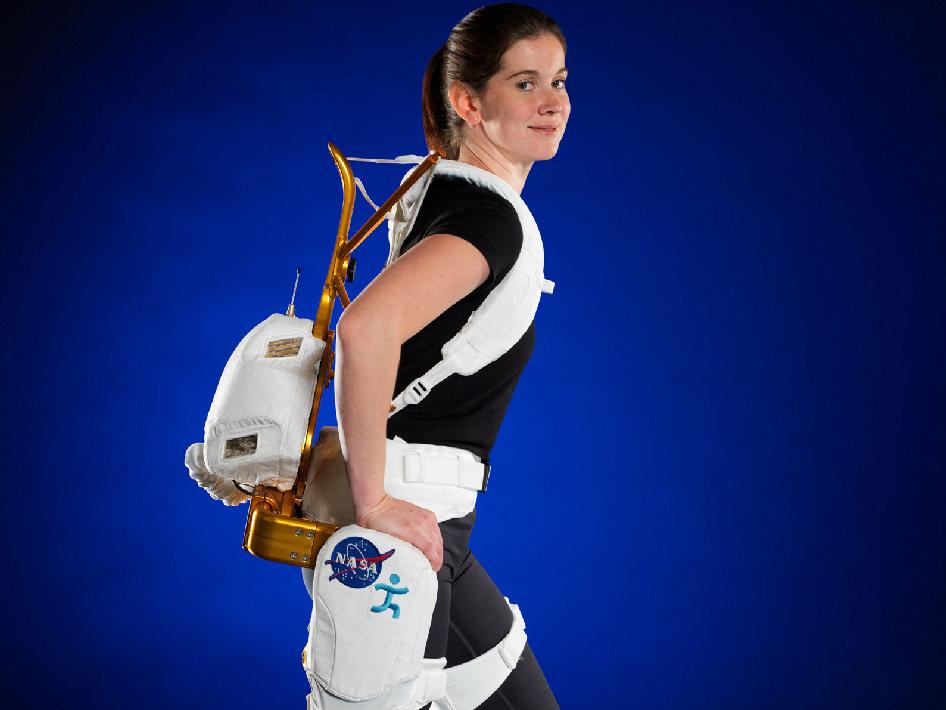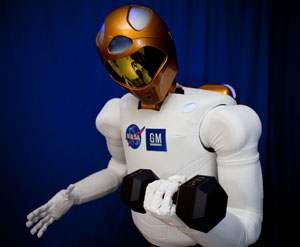A robotic exoskeleton for space and Earth
October 17, 2012

Project Engineer Shelley Rea demonstrates the X1 Robotic Exoskeleton for resistive exercise, rehabilitation and mobility augmentation in the Advanced Robotics Development Lab (credit: Robert Markowitz)
A robotic exoskeleton called X1 has been developed by NASA, The Florida Institute for Human and Machine Cognition (IHMC), and Oceaneering Space Systems.
The 57-pound device is a robot that a human could wear over their body either to assist or inhibit movement in leg joints.
In the inhibit mode, the robotic device would be used as an in-space exercise machine to supply resistance against leg movement. The assist mode could help paraplegics and others to walk for the first time.
The technology is a spinoff of NASA’s Robonaut 2 humanoid robot, which is currently working with astronauts aboard the International Space Station.
Worn over the legs with a harness that reaches up the back and around the shoulders, X1 has 10 degrees of freedom, or joints — four motorized joints at the hips and the knees, and six passive joints that allow for sidestepping, turning and pointing, and flexing a foot. There also are multiple adjustment points, allowing the X1 to be used in many different ways.
X1 currently is in a research and development phase, where the primary focus is development, evaluation and improvement of the technology. NASA is examining the potential for the X1 as an exercise device to improve crew health both aboard the space station and during future long-duration missions to an asteroid or Mars.
X1 could replicate common crew exercises, which are vital to keeping astronauts healthy in microgravity. In addition, the device has the ability to measure, record and stream back in real-time data to flight controllers on Earth, giving doctors better insight into the crew’s exercise.
X1 also could provide a robotic power boost to astronauts as they work on the surface of distant planetary bodies. Coupled with a spacesuit, X1 could provide additional force when needed during surface exploration, providing even more bang for its small bulk.
Here on Earth, IHMC is interested in developing and using X1 as an assistive walking device. Using NASA technology and walking algorithms developed at IHMC, X1 has the potential to produce high torques to allow for assisted walking over varied terrain, as well as stair climbing. Preliminary studies using X1 for this purpose have already started at IHMC.
Other applications include rehabilitation, gait modification,and offloading large amounts of weight from the wearer. Preliminary studies by IHMC have shown X1 to be more comfortable, easier to adjust, and easier to put on than older exoskeleton devices. Researchers plan on improving on the X1 design, adding more active joints to areas such as the ankle and hip, increasing the potential uses for the device.
NASA’s Game Changing Development Program, part of NASA’s Space Technology Program, funds the X1 work. NASA’s Space Technology Program focuses on maturing advanced space technologies that may lead to entirely new approaches for space missions and solutions to significant national needs.
